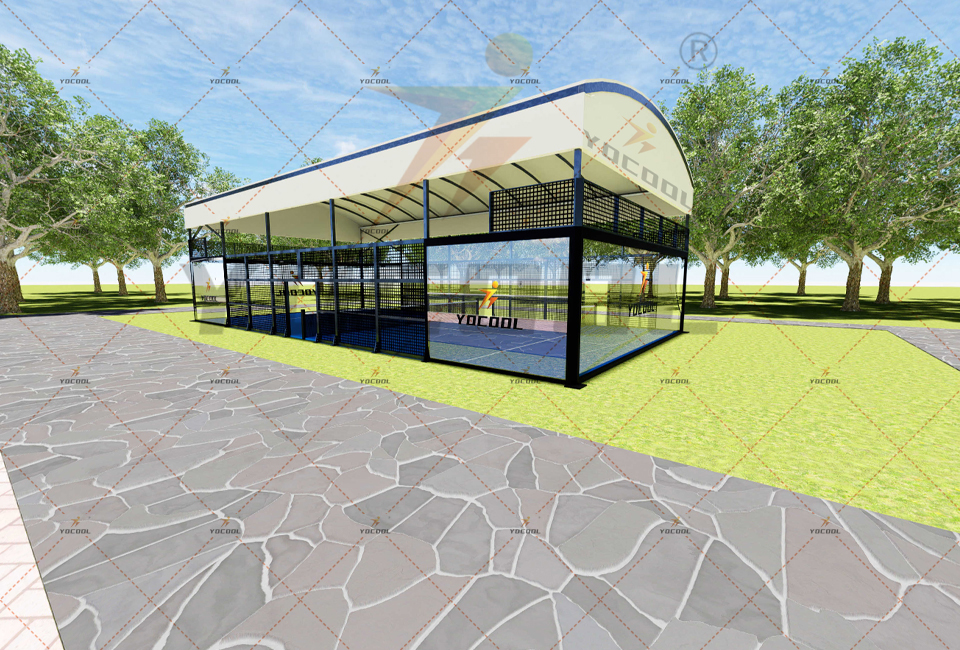

Understanding the Cost of Building a Padel Court A Manufacturer's Perspective
Padel is rapidly gaining popularity across the globe, attracting enthusiasts of all ages and skill levels. As the sport expands, so does the demand for quality padel courts. For potential investors, clubs, and municipalities, understanding the costs associated with building a padel court is vital. This article explores the critical factors that affect the cost of constructing a padel court from a manufacturer's perspective.
1. Design and Planning
The first step in building a padel court is careful design and planning. The standard dimensions for a padel court are 20 meters in width and 10 meters in length. However, additional space is needed for player movement and spectator areas. The layout must take into account local regulations, as well as the available land. Hiring an experienced architect or designer familiar with padel specifications is essential. This initial step can incur costs ranging from a few thousand to several tens of thousands of dollars, depending on the complexity of the project.
2. Materials Selection
The materials used in constructing a padel court significantly impact overall costs. High-quality materials not only enhance the durability of the court but also provide a better playing experience. The flooring, for example, can range from artificial grass to concrete or asphalt, each with varying costs. Artificial grass, while providing excellent grip and feel, may cost more upfront but can be more economical in the long run due to reduced maintenance.
Other crucial components include the walls, fencing, and lighting. Glass wall panels, which are often used in padel court construction, tend to be expensive but are essential for visibility during play. Fencing needs to be robust to withstand the impact of the ball while ensuring safety for spectators. Finally, adequate lighting is crucial for evening matches, and the cost will vary based on the type of lighting installed.
3. Labor Costs
Labor costs can significantly influence the overall budget. Depending on the region, construction labor rates can vary. Skilled labor is required for the installation of specialized components such as glass walls and flooring systems. It is wise to obtain multiple quotes from reputable contractors experienced in padel court construction. This allows for better budgeting and ensures that quality workmanship is maintained.
4. Location Considerations

The location of the padel court plays a role in cost as well. Urban areas may have higher land costs and construction regulations than rural locations, impacting the overall budget. Accessibility for players and spectators must also be considered, as additional facilities like parking may add to costs. Moreover, local climate factors should influence decisions on materials and construction techniques, leading to potentially higher costs if specific adaptations are needed.
5. Permitting and Legal Fees
Before construction can commence, it’s necessary to navigate local regulations and obtain the required permits. This aspect can often be overlooked, but it is a crucial part of the planning process. Legal fees and permit costs can accumulate and should be factored into the overall budget. Engaging a local expert with experience in sports facility regulations can streamline this process and help avoid costly delays.
6. Maintenance and Operational Costs
Once the court is built, ongoing maintenance costs must be anticipated. This includes regular upkeep of the playing surface, repairs to fencing and walls, and costs associated with utilities like lighting. Engaging a maintenance contractor can help manage these expenses effectively. Additionally, if the court is part of a larger facility, overhead costs such as staffing and marketing should be considered.
7. Budget Overall
In total, the cost of building a padel court can range from $30,000 to over $100,000, depending on the factors mentioned above. Choosing the right manufacturer is crucial, as they can provide guidance on optimizing costs while ensuring quality construction.
Conclusion
Building a padel court is an exciting venture that requires careful planning and budgeting. By understanding the various factors that influence costs—from design and materials to labor and maintenance—investors can make informed decisions that align with their financial goals. As the sport continues to grow in popularity, investing in a padel court can provide significant returns, both in terms of community engagement and recreational opportunities.
High-Performance Industrial Flooring Solutions China Paddle Tennis Court for Sale
High-Performance Industrial Flooring Solutions Durable & Cost-Effective
Homogeneous Transparent Floor – Durable & Stylish Rubber Floor Solutions
Premium Homogeneous Transparent Floor for Durable & Stylish Spaces Rubber Floor Solutions
Premium Sports Floor Solutions Durable PVC Sports Floor & Rubber Floor for Gyms
Durable Rubber Composite Floor Premium Rubber Floor & Mats Solutions